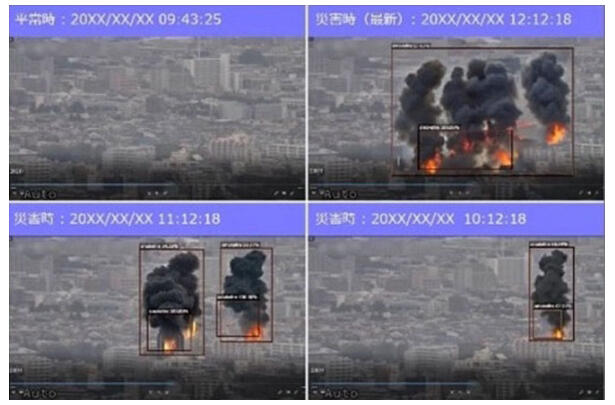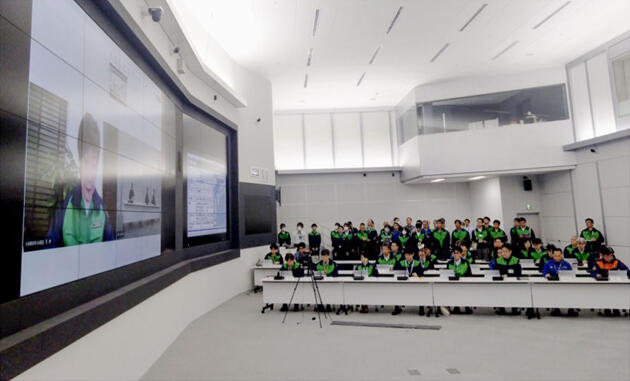The Tokyo metropolitan government has launched an artificial intelligence system that uses high-altitude cameras to detect fires and building collapses in real-time to accelerate its initial disaster response during major earthquakes.
Japan's weather agency last week issued its first-ever advisory warning of an increased risk of a megaquake along the Nankai Trough running between central and southwestern Japan.
The AI-driven system analyzes footage from high-resolution cameras, with two installed at the Tokyo metropolitan government building and one each at a bridge near Tokyo Bay and a location in the western part of the metropolitan area, the local authorities and system developer Hitachi Ltd. said.

(Photo courtesy of Hitachi Ltd.)
Provided by Kyodo News
The system automatically identifies fires and structural collapses, providing the information to relevant agencies such as the police, fire department and the Japan Self-Defense Forces to enable quicker response efforts.
According to a damage assessment released by the Tokyo metropolitan government in 2022, a Nankai Trough megaquake could generate tsunami 2 to 2.6 meters high along the Tokyo Bay area.
There is also a 70 percent chance of a massive earthquake occurring directly beneath Tokyo within the next 30 years. A powerful earthquake centered under southern Tokyo could result in about 6,100 deaths and damage to around 194,000 buildings.
The system began full-scale operation in March. By the end of the fiscal year through March 2025, two additional cameras will be activated at Tokyo Skytree, expanding coverage to include nearly all of the capital's 23 wards and parts of the western area.
The AI reviews camera footage to identify smoke or structural damage, displaying the information on a screen with reports and maps. It can also detect areas densely packed with wooden houses, allowing authorities to prioritize areas at higher risk of severe damage.
Previously, cameras were operated manually, making it difficult to obtain accurate information immediately after a disaster. A Tokyo metropolitan government official said, "We try to use advanced technology to quickly assess the full scope of the damage."

Provided by Kyodo News




